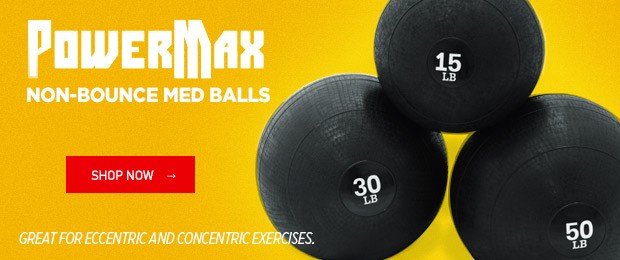
The Howe Military Academy located in Howe, Indiana recently made an investment with elitefts to outfit a custom weight room with equipment for their students. The completion of this new, state-of-the-art Strength and Fitness Center demonstrates and reinforces the school’s commitment to excellence in student athletics programming.
To commemorate the completion of the facility, Dave Tate and Nate Harvey drove out to coach the cadets on how to properly use the equipment to optimize their training. In route to Howe, Tate and Harvey answered questions from elitefts readers in a special edition road trip Q&A. Together, they compare exercises for strength sport and team sport athletes, discuss training with bands and chains, examine the value of jump training, and debate the importance of personal records vs. podium finishes in the sport of powerlifting.
Road Trip Question and Answer
When choosing max effort movements and supplemental movements for both strength sport athletes and team sport athletes, how does your exercise pool differ?
Harvey: Between the team sport athlete and an…intermediate lifter, it would pretty much be the same. I would get them good at wide-stance squatting, which will usually take about six weeks or so, and then after that we’ll start rotating in some close-stance work so they are stronger at more angles than just one…we want them strong in a lot of different positions. We’ll also start rotating in some good mornings every once in a while, and a pull maybe every third week.
And then for upper body…I typically like to rotate every other week a full-range movement and a partial-range movement. The only time I really go partial-range movement on the lower body would be a pin pull. I’m not a fan of high box squats or anything like that... So, the upper-body stuff I would rotate full-range and partial-range every other week, and I usually try to use accommodating resistance if I can.
If you could only train with chains or bands for accommodating resistance, which would you choose and why?
Harvey: I would choose bands because I think you get a bigger training effect from them. So, if I was stuck on a desert island with a monolift, bar, and bands, I would take bands. And then what I would do is I would just rotate them in and out with a straight weight – but then when I needed to be my strongest and fastest, I would add the bands in.
How important is jump training for powerlifting? I know Louie suggests at least 40 jumps twice per week — do you think there should be more or less?
Harvey: I know a decent amount of powerlifters and not one does jump training. Maybe Louie has his guys do it, but I don’t know many powerlifters that do jump training, to be honest. For athletes…I always like to try to work up to 40 jumps twice per week, but you’re not always going to get there and it depends where you’re at in your season…We did see a difference with our athletes when we pushed up the jump volume, but like I said, you’re not always going to be able to get there…you’re not going to do 80 jumps per week with an in-season athlete.
Tate: I have used jumps with the lifters that I’ve worked with, but not in the same regard as most people would. I like to find out how long a lifter can maintain that dynamic, explosive component without training it, because in certain instances I’ve had to remove that before a meet just because they were either a geared lifter and they needed more time in the gear, or I had to push up the maximum strength because they were a little bit behind for one reason or another.
What I’ve found is with most lifters I’ve worked with, they can get away from dynamic work for about four weeks before I start to see a drop in force when they lift the bar, or any type of drop in strength. But, I can extend that two to three more weeks if I have some type of jump in for the squat. So, instead of the dynamic squat day…I would put in a jump variation which could be a box squat to a jump, or just a straight jump – in both cases, stepping down not jumping down, and I used Prilepin’s Chart for that. Now, being that it is a jump, I will max them out on the jump to kind of see where they are, so I know what their 100% is, and then base the speed work on three’s or five’s using Prilepin’s Chart to determine what they’re going to do with that.
For the bench training, when I have to back that off, I’ll usually back it off with a barbell onto a Tsunami Bar, or med ball throws, but I won’t do plyometric push-ups. So, that’s kind of how I implement it, and it’s not very often. It’s usually because…we’re dealing with some type of injury that makes it uncomfortable for them to squat twice per week, so I can still get the explosive component. Or as I said before, they’re peaking for a meet and I have to, for whatever reasons I’m seeing at that time, pull out the dynamic work to be able to focus on other qualities.
Should novice lifters use bands and chains? When does it make sense to add those?
Harvey: For lifters, I would typically wait a little longer until I implemented bands and chains. When I think of a lifter, I think of someone who is going to be doing this more long-term – more of a marathon-type situation. [For] athletes, I always like to put that stuff in as soon as the athlete is proficient at the movement we were training…we would just scale it down to their strength levels.
My thought was we only have them for so long, [so] why not introduce a training stimulus that’s going to help get them to the end goal quicker. Whereas a lifter, I’m thinking they’re going to be more long-term and you slow-cook their progress a little bit.
Tate: I always found that when working with the [general] population, all technical work on the squat or the bench press would be with a broomstick. The goal is obviously to get them up to a barbell. Once you get them from the broomstick to the barbell (and the technique as well), there’s a little transitional period in there that’s a little funky…They don’t really have the coordination yet to do the movement well, and they certainly don’t have the neuromuscular coordination to do the movement with any kind of synchronization.
With them, I’d go back down to the broomstick…or a lighter bar…and I would put a little bit of band on – not a lot, just enough of the band so that when they stood up with the squat, they had to make their body tight immediately. One of the hardest things to teach a novice is how to get their body tight under load. It’s super hard…but you put a band on there and they stand up — immediately they’re tight.
The second thing that’s really hard to teach a novice is how to stand up with any type of force or compensatory acceleration…When you have a little bit of band on there and they sit down and pause on a box, they go to stand up, [and] usually they’ll come about halfway up and go right back down. And then, they’ll stand right up super-fast. So, I use it more as a training aid…to help reinforce the technique a little bit faster than I would just with verbal cues or trying to use balance type of work to push them up.
Which do you guys prefer in powerlifting: athletes getting podium finishes or records?
Harvey: Just make progress. Work on personal records, but then when you’re at your big meet or big competition, that’s when you want to get the podium…that could go for any athlete.
Tate: I remember years ago…it was one of the IPA National Meets…and I traveled to the meet with Louie and Rob Fusner…and the topic came up of what’s more important: breaking a PR, or winning. I was under the mindset [that] I wanted a PR…and Rob said, ‘I want to win.’ And I’m like, even if you lifted less [than your best] on all three of your lifts and won, compared to adding 20-30 pounds on each one of your lifts and not placing at all, you would rather win? And he said, ‘Yes, I would rather win, because I can’t stand to lose, no matter what.’
And I realized right then, I had to change my mindset. Because it is a competitive sport…PR’s are important…but I learned why Rob was a better competitor than I was. He hated to lose far more than I did. And that’s something that I’ve seen consistently in the people who do break all-time world records, the people who do actually end up winning all the time. To them, it’s always been more about winning than it is PR’s.
By The Minute
- (0:28) Strength Sport vs. Team Sport Athletes
- (2:02) Chains vs. Bands for Accommodating Resistance
- (3:51) Jump-Training in Powerlifting
- (7:21) Chains and Bands for Novices
- (10:53) Personal Records vs. Podium Finishes










